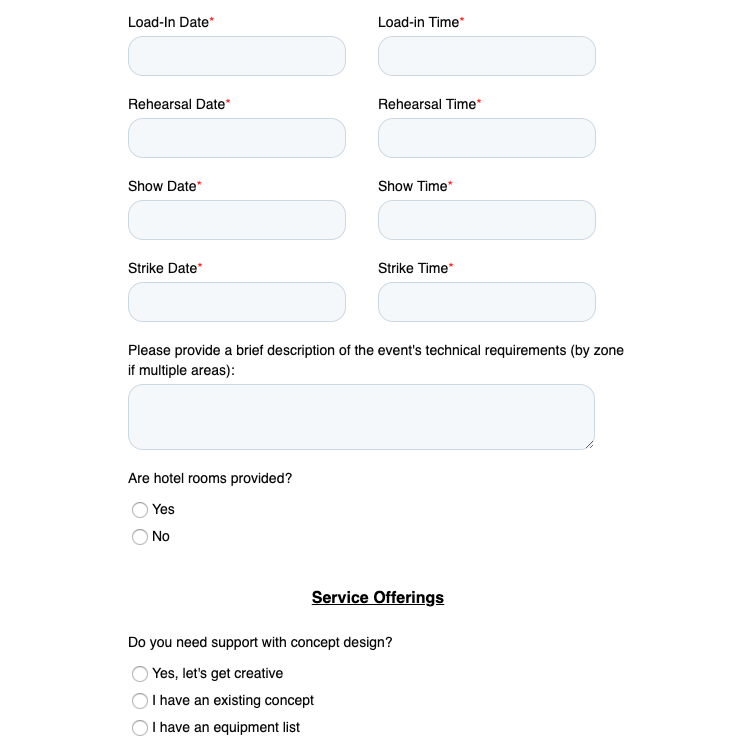Writing an RFP for an upcoming event might seem daunting, but armed with the right approach, it makes event season significantly easier. In fact, a thorough RFP can save you loads of time and frustration during the event.
Here’s why: an RFP can be used as a roadmap to a successful event. Planning an event without a defined framework becomes ad hoc and piecemeal – leading to misaligned goals, increased costs and erratic execution. An RFP informs and instructs, allowing you to set parameters, expectations and deadlines for your event.
A good outline gives your production team a complete understanding of demands and expectations to inform their bid. So, in effect, an RFP aligns everyone around an actionable plan. Ready to tackle that next RFP? Here are 3 RFP-writing tips that save you time, increase efficiency and keep costs in line with your event budget.
1. DEFINE ACCURATE LOGISTICS
Laying out accurate event logistics is an essential starting point for your RFP. Key logistical items to include in your RFP include:
- What date/time did you contract the room for?
- Load-in date and time
- Rehearsal date/time
- Show date/time
- End of show date/time
- What day/time did you contract the room until?
Include only the most important logistical details and avoid unnecessary line-by-line items. Here’s a look at the ATXES onboarding form for quick reference.

2. SHARE YOUR DETAILED TIMELINE
As you work through the RFP, ask yourself what the production agency will be expecting from you and when. You’re able to set explicit actionable expectations on a timeline and the production agency can respond with their own capabilities and needs. The result is an RFP that successfully aligns your needs with the team’s capabilities.
Details to include are:
- Event milestones
- Equipment purchase/contract and delivery deadlines
- Labor and personnel-related timelines
- Pre-production activity and deadlines
- Event-day expectations and timelines
- Post-production tasks and timelines
Providing the right timeline and expectations upfront minimizes risks and ensures that the expectations for your event are met or exceeded.
3. PROVIDE A BUDGET FRAMEWORK BUT DON’T DICTATE THE DETAILS
In the spirit of comprehensive planning, it’s tempting to add one line item expense after another to an RFP. But, you shouldn’t. A general budget framework is a more effective RFP approach. Why?
Instead of allowing a production company to leverage their knowledge and experience to strategically execute events, an itemized budget creates limitations that they must instead react to. This limits their ability to add value and really go above-and-beyond within your event budget.
Wrapping Up the RFP
Following these tips helps avoid duplicate workflows throughout the execution process and reduces the time input required of both parties. It enables you to reallocate this time to scale up creative planning that will accomplish your strategic event initiatives.
For a list of the most critical information to include when building an RFP, take a look at ATX’s Event Onboarding Questionnaire.




Leave a Reply
Want to join the discussion?Feel free to contribute!